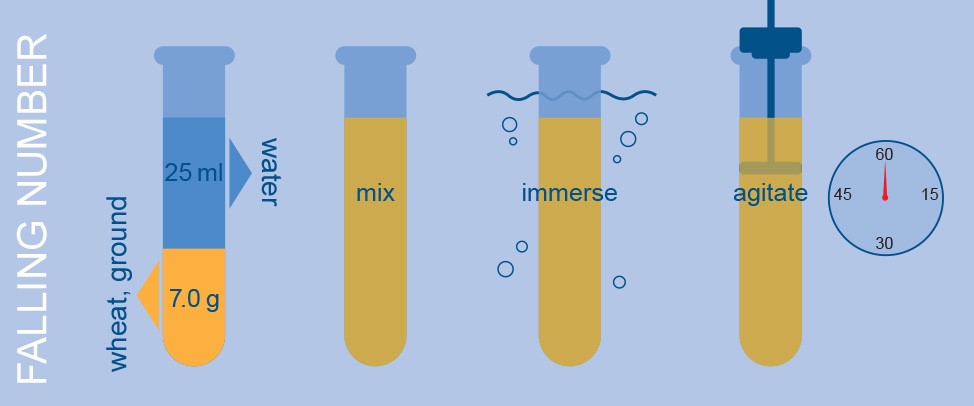Falling Number test
The Falling Number test is an internationally standardized method for determining the amount of sprout damage in wheat caused by the alpha-amylase enzyme.
Visual assessment of sprout damage can only confirm that germination has started. You cannot visually determine alpha-amylase levels.
Alpha-amylase activity has direct impact on bread and pasta quality and adversely affects the malting process. As little as 5% sprouted grain, mixed with 95% sound grain, can render the entire lot unacceptable.
To perform the Falling Number test, flour and distilled water are mixed in a test tube. The test tube is immersed in boiling water where the flour slurry is agitated for 60 seconds using a plunger system. After 60 seconds, the plunger is released from the top of the unit and allowed to fall naturally through the slurry.
The Falling Number value includes the 60 seconds of agitation plus the number of seconds that it takes for the plunger to fall from the top of the test tube to the bottom. The more alpha-amylase present, the thinner the slurry and the more quickly the plunger falls, resulting in a lower Falling Number. A Falling Number value of around 300 seconds indicates wheat that is sound and satisfactory for most milling and bread baking processes.
A Falling Number is often specified in sales contracts with buyers of Canadian wheat. The Canadian Grain Commission recently sought industry input about adding Falling Number as a grading factor due to its importance in determining wheat quality.

